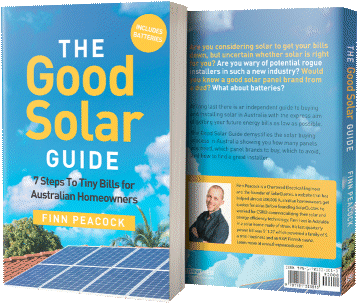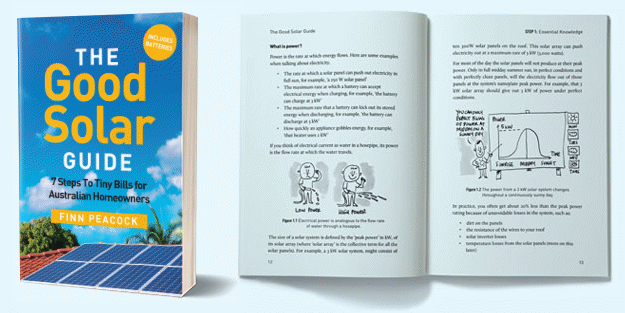
Victoria’s Essential Services Commission (ESC) has proposed new rules that would compel the state’s energy retailers to shift some customers onto cheaper electricity and gas plans.
An ‘energy loyalty tax’ isn’t really a tax, but refers to higher prices retailers may charge long-term customers compared to new customers who get better deals.
In a report published late last year, the Australian Competition and Consumer Commission (ACCC) estimated more than 80% of National Electricity Market1 (NEM) households are paying more for electricity than they need to, and the loyalty penalty increases with the age of the offer households are on.
This is occurring even though guidelines have been in place across the NEM for some time requiring retailers to include a ‘better offer’ or ‘best offer’ message on the first page of a bill at least every 100 days, based on a customer’s annual usage. There may also be flags in online account interfaces. (Added 23 May: This ‘best offer’ messaging is proving problematic. )
As part of its Energy Retail Code of Practice review, the ESC is proposing a new rule it hopes will help end the ‘loyalty tax’. Energy retailers would be required to move customers that have been on the same plan for 4 years onto a more reasonable rate if one is available.
“We know there are barriers that stop people shopping around in the complex energy market, but we don’t want those barriers to result in Victorians paying unnecessarily or unreasonably high rates,” said Essential Services Commission Chairperson and Commissioner Gerard Brody.
‘Reasonable Price’ Rule
Under the proposed rule, a retailer must review the tariffs of a small customer on an older retail contract at least annually. If the retailer identifies the customer is not being charged a reasonable price, it must within 30 days of identification reduce the tariffs or switch the customer to a cheaper plan; and without penalties.
‘Reasonable price’ could be open to interpretation and the ACCC has this somewhat covered, defining it as a price that is the same or below the price of the Victorian Default Offer (VDO). The VDO is what households and small business customers in the state pay for electricity if they haven’t chosen a market offer. While market offers are often less expensive than the VDO, it is meant to act as a safety net.
Perhaps 4 years is too long. The ACCC indicated households on plans over a year old are paying, on average across the NEM, $238 more per year than households on newer offers.
Still, it would be some progress.
Financial Hardship And Other Changes
Among other changes proposed by the ESC are ensuring customers experiencing financial hardship are shifted onto a retailer’s cheapest plan. This includes customers being assisted under the Payment Difficulty Framework, or those in arrears for at least three months and owing more than $1,000.
“If an energy retailer is supporting someone in financial hardship, moving them onto the cheapest plan is a simple, considerate step they can take to help the customer,” said Brody. “It’s contradictory to be helping someone in hardship while also charging them unnecessarily high rates.”
Furthermore, the changes would require retailers to make it easier for customers to move to their cheapest plan, prohibit them requiring payment methods such as direct debit or e-billing for accessing a particular energy plan, and increase the minimum debt a customer can be disconnected for from $300 to $500.
The Commission estimates all its proposed rules would have saved affected customers an average of around $225 on electricity and $182 on their gas each year — so it’s significant, particularly for those who are battling.
The ESC is encouraging feedback on its proposed changes until 26 June 2025, which can be submitted through Engage Victoria.
When Was The Last Time You Compared Electricity Plans?
Life can get hectic, but staying on top of electricity plan pricing doesn’t have to be particularly time-consuming — and it could be time very well-spent.
While designed with solar households in mind, SolarQuotes’ electricity plan comparison tool should be useful to households without solar panels too; and it’s regularly updated. And although SolarQuotes is owned by Origin Energy, we remain an independent business unit — the tool doesn’t favour Origin’s plans.
TIP: Solar owners are usually better off with simple, fixed rate electricity plans, while solar + battery owners will often find a time-of-use tariff featuring lower off-peak and shoulder rates the best option.
PS: For households with gas, learn how much you could save by getting off gas and electrifying your home.
Footnotes
- The National Electricity Market consists of Queensland, New South Wales, the Australian Capital Territory, Victoria, South Australia, and Tasmania. ↩

 RSS - Posts
RSS - Posts



Not mentioned in this piece is that a company’s best offer, and a company’s official offers as listed on their website can differ significantly!!!
I recently(ish) looked at my latest power bill and then worked out the difference if I’d been under the old plan – there was over $100 difference. Sure that’s not a lot, but then the usage wasn’t horrifically high either – the more you use the more you can save. Most of the saving was from a higher average FiT, but of course solar generation was down because we seem to be having a colder, cloudier, wetter autumn.
I’m not sure a power company will you give a better deal if you simply ask, but if you run your figures, find a company\plan that may offer a better deal, then let the company you’ve been loyal to know you’re considering moving because numbers, you may get a significantly better option – lower charges, and higher FiT! (If you can score a flat 10c FiT that’s especially nice these days!)
I recently called and asked AGL if they can do anything better on my SolarSavers plan for being loyal with them. They miraculously told me about a new plan (Solar VIP) with 17cents FiT for 10KWH a day and also reduced usage and daily charges by few cents.
I never seen this plan when checked online. I feel I am the lucky one and not sure how long this lasts.